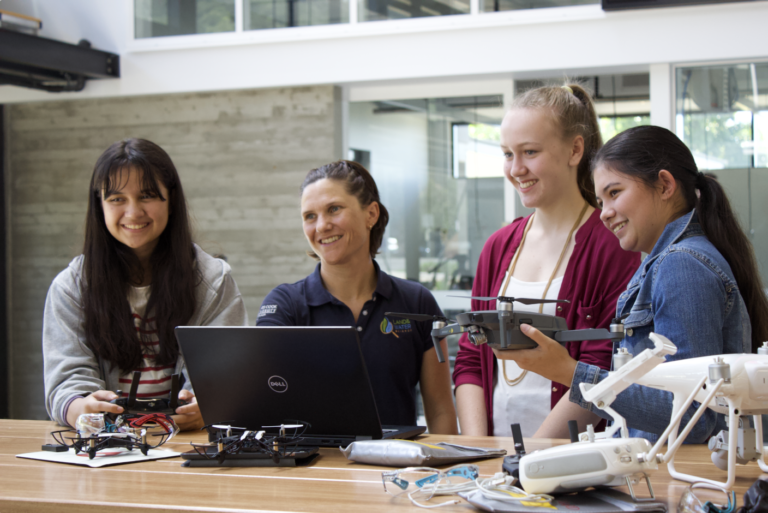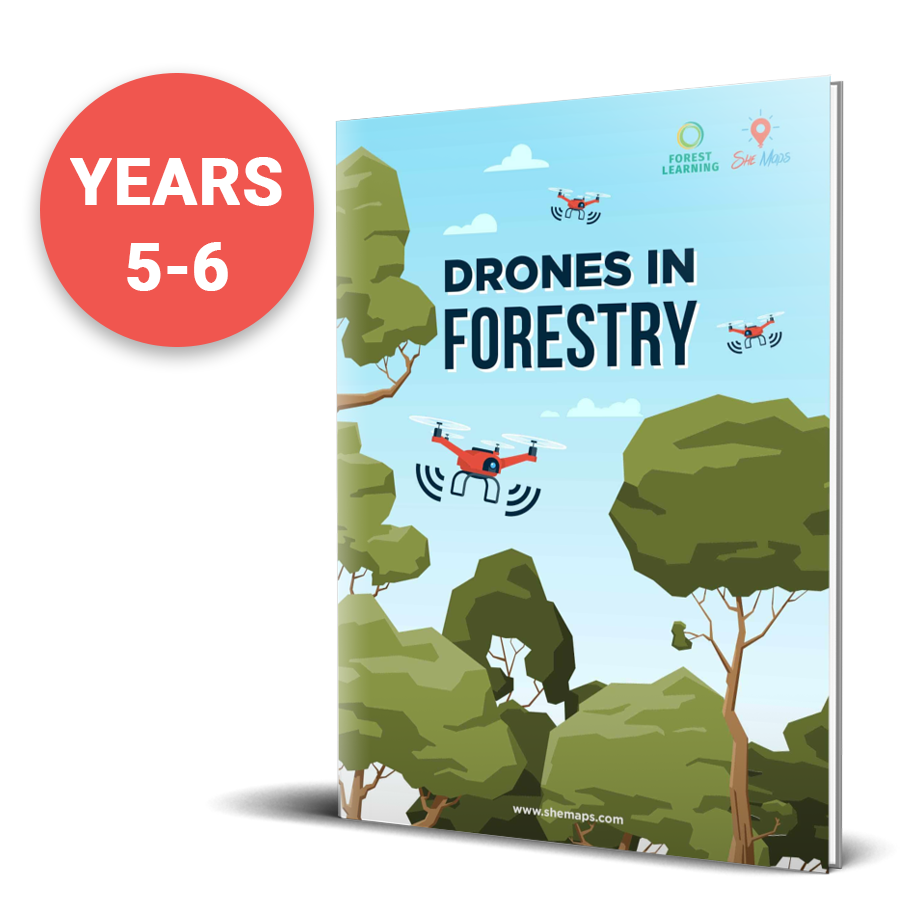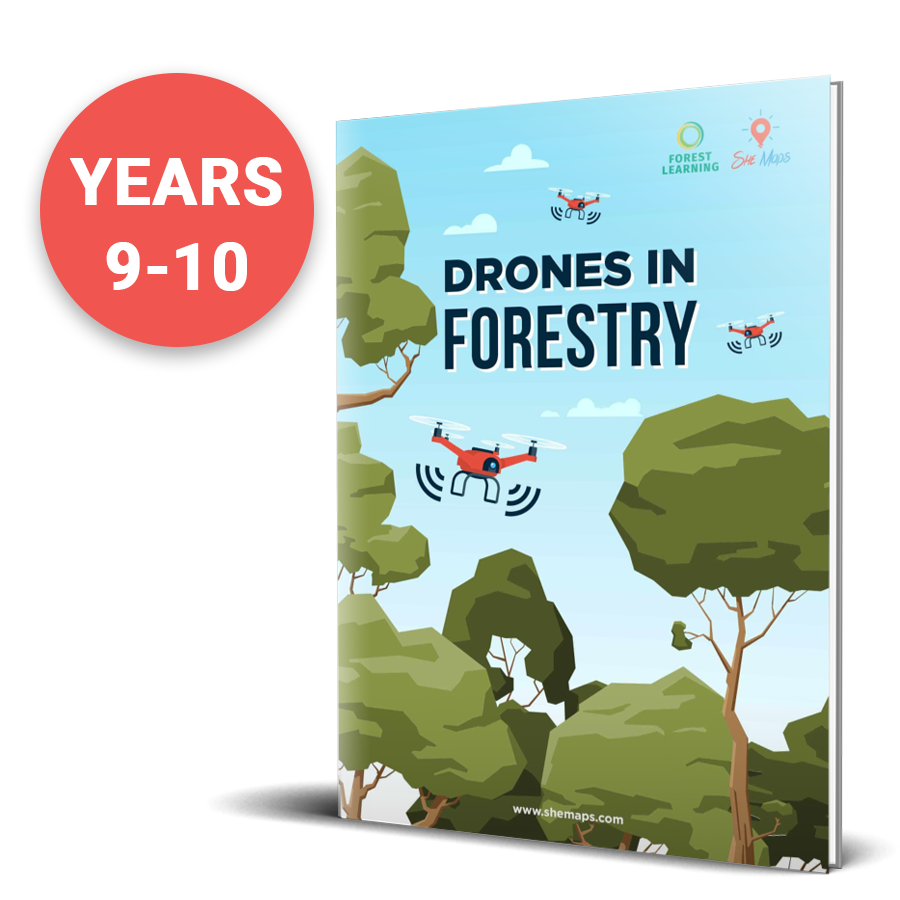Main Menu


With their fascinating design, versatility, programmability, and fun-factor, it isn’t hard to see why drones are increasing in popularity as teaching tools around the nation.
Drones are great in not only teaching students obvious piloting skills but also in teaching essential 21st century skills, such as critical thinking, problem solving, coding, digital competence, and creativity.
Drones and robots have incredibly wide-ranging uses. The sooner children can engage with the technology, the better equipped they will be for further fields of study and career opportunities.
A study conducted by Deloitte and commissioned by the Department of Infrastructure, Transport, Regional Development and Communications shows that drones will be responsible for a $14.5 billion increase in GDP over the next 20 years, mainly due to their increased use in agriculture, forestry and fisheries, mining, construction, transportation, government services, and defence, leading to the creation and support of 5,500 full time equivalent jobs.
Globally, it is considered that drones are still in the earlier stage of development, which provides a potential for rapid growth in the future. It is clear that drones are not going to be a flash in the pan technology. They are going to bring on the next wave of ‘jobs you haven’t thought of’ as our primary school students of today enter the workforce of 2030.
Many of the aforementioned industries realise that the current drone skill shortage must be addressed rather urgently in order to meet the growing demand for drone operators and geospatial experts. At the same time, teachers are made aware of the huge potential drones present to students of all skill levels, which leads to one conclusion: not familiarising students with drone technologies is a huge missed opportunity.
But teaching with drones doesn’t just serve the purpose of equipping students with the competitive edge needed to thrive in jobs of today and the future.
For many, especially girls, educational drones can be the key to see STEM through a different lens, and to gain confidence in subjects they consider to be a male domain. Drones allow for the simulation of real-world applications, immersing students in hands-on-activities and scenario-based problem solving. Drones are naturally fun and fascinating, and they keep students engaged. Drones can go where humans can’t, building that natural curiosity in kids.
The challenge many teachers face despite these obvious benefits, is that they lack the know-how or necessary confidence to use educational drones in the classroom, let alone create a stress-free yet curriculum-aligned program to engage students with drones.
She Maps offers a solution to this challenge by training teachers and making professional development content accessible on-demand. Their ready-to-teach classroom materials and drone activity repertoire has been developed by teachers and in conjunction with relevant industry bodies, ensuring the content is not only aligned with the Australian Curriculum but also industry standards and practices.
Founded in 2017 by geospatial scientist Dr Karen Joyce (pictured above) and former high school teacher Paul Mead, She Maps has trained thousands of teachers around Australia and internationally on how to engage students with indoor drones, and has delivered their in-school drone workshops to thousands of students face-to-face.
One of the most notable observations was made by Dr Karen Joyce as she delivered a 2016 National Science Week talk on drones to two schools, a primary school and a secondary school. Whilst the primary school group saw a healthy mix of male and female students, both equally eager to participate in the session, the situation couldn’t have looked more different at the high school where the group was almost exclusively male.
Looking further into this, Dr Joyce discovered a phenomenon that takes place among female students in upper primary year levels. Due to social norms and unconscious gender biases, girls lose their confidence in STEM and a mental shift occurs in regard to their associations and attitude towards science, maths, and technology.
Dr Joyce sought to change this and decided to use drones and positive female role modelling by including images and videos of female scientists, drone pilots, and technical experts in a program for students. After the first session, the effect on girls’ perceptions and attitudes towards STEM was unquestionable. What Karen discovered was that drones are a hook to spark students’ interest, build their confidence, and keep them engaged as they progress through the school years.
Today, students from as young as prep are empowered to learn that STEM is not a boys-only field. The playfully illustrated children’s book “Pippa & Dronie”, written by Paul Mead, encourages primary students through storytelling and fun activities to be open-minded about STEM and resilient towards the stigma imposed on girls in STEM through the unconscious bias of society.
For older students in year 5 and above, we developed a foundational Classroom Drone Essentials program, teaching students about drone safety, the wide application of drones, how to fly drones manually and how to program drones with block coding.
While our student drone workshops have been immensely effective, we are aware that, in order to create impact on a larger scale, we must build competence and confidence amongst teachers. To achieve this, She Maps offers its Classroom Drone Essentials program to teachers as recognised professional development content, available via our on-demand online platform, live online workshops, and face-to-face training sessions.
In 2023, our team trained almost 300 teachers across 15 metropolitan and regional locations around the country to increase the use of educational drones in classrooms, an initiative that was heavily subsidised by the Australian Government Department of Education.
She Maps’ curriculum-aligned units of work support teachers with ideas, lesson plans and assessment rubrics, involving scenario-based applications of drones in modern industries. Co-developed with leading organisations in such industries, students will for example solve the problem of transporting medical supplies from the mountains in Nepal to the base village, simulate growing their own crops and performing agricultural drone activities, or surveying the extent of a flood event by sending their drone on a coded flightpath.
In our latest initiative A Launchpad for Women: Promoting Geospatial and Space Careers to Female Youth, we tighten our focus of supporting teachers and female students.
Thanks to support from the Australian Government as part of the Women in STEM and Entrepreneurship [WISE] Round 4 Grant, we are working with 24 secondary schools of Victoria, New South Wales and Queensland, to provide support to female students in low-socio-educational areas. Girls of all ages from years 7-12 will learn how to fly drones and will be made aware of the vast diversity and potential behind ‘geospatial careers’, a term still foreign to many youth, despite our daily-lives being so strongly connected to geospatial technologies wherever we go.
And while the appetite is strong for schools to upskill their teachers, the biggest hurdle for most, especially low-socio-educational schools, is allocating financial resources to invest in drone equipment. Educational micro-drones are not expensive compared to the cost of commercial drones, and a kit as small as 5 drones can be used to teach 10-15 students at a time. And yet, schools experience financial difficulty to make such a commitment despite the obvious benefits and long-term impact that this will create.
If you are part of an organisation that benefits from drone skills being taught at schools, you can partner with She Maps to help them inspire and equip the next generation of spatial experts.
If you are a parent and have children in primary or secondary school, and would like them to be introduced to drones at school, you can make your classroom teacher or principal aware of She Maps.
If you are a teacher and would like to learn more, you can do so by exploring our teacher development and classroom resources and classroom drone kits.
She Maps is Australia’s leading expert in drone and geospatial education.
She Maps assist schools with the purchasing of drones, school-industry created drone and geospatial teaching resources and highly supportive teacher professional development.
Ready to buy drones for your school? We are an authorised DJI reseller in Australia

Subscribe by email and never miss a blog post or announcement.

She Maps aims to bring much needed diversity and support to STEM. We do this by providing drone and geospatial programs to teachers and schools across the globe.
At She Maps we acknowledge the Traditional Custodians of Country throughout Australia and their connections to land, sea, and community. We pay our respect to their Elders past and present and extend that respect to all Aboriginal and Torres Strait Islander peoples today.
Aboriginal and Torres Strait Islander peoples are advised that this site may contain names, voices, or images of people who have passed away.
Take our resources for a spin and join the thousands of teachers who love our ready-to-teach classroom materials. Try one of our complete units of work for free.

